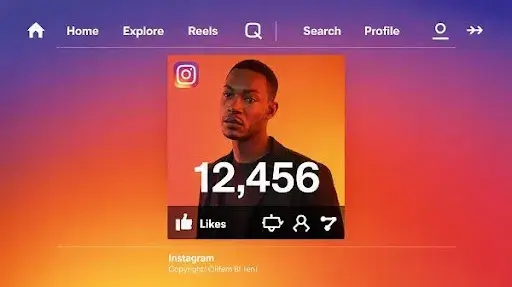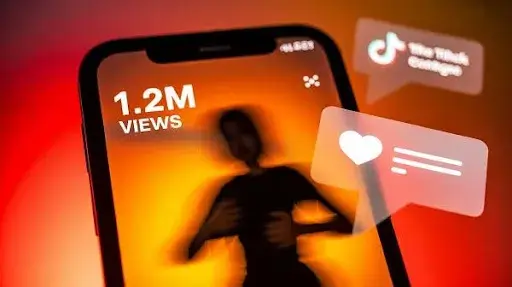Ever post a video that racks up a thousand “views” in a day, yet nobody seems to comment or like it? On the flip side, you share another one with far fewer views, but engagement explodes. That’s the messy truth of video metrics: not all views mean the same thing.
What counts as a view changes from platform to platform, and if you don’t know the rules, you could be misreading your success.
This isn’t just some egotistic goal. Understanding how each of these platforms, YouTube, Instagram, Facebook, and TikTok, interpret a view means you can have a clearer picture of how you should evaluate your video’s success.
After understanding these metrics, you will no longer continue to compare irrelevant metrics to each other. Instead, you will have no problem realigning your content strategy.
Let’s break down what counts as a view on each social network and what those numbers actually tell you.
Why Understanding What Counts as a View on Social Media Matters
This should be a primer for the rationale behind these definitions before outlining each platform. All these platforms wish for advertisers to have faith in them, creators to be engaged, and users to continue watching. That means their view-count systems aren’t random. They’re designed to balance fairness with business interests.
For creators, this matters because it shapes how success is measured. Imagine spending months producing a high-quality video with 3D animation services, only to find out half the “views” don’t reflect actual audience attention.
Understanding what counts as a view on social media protects you from false confidence and helps refine your approach.
What Counts as a View on YouTube?
YouTube takes video engagement seriously. It doesn’t just hand out view counts for every second-long glance.
YouTube Video Count as a View?
For long-form YouTube videos, a view is added only when someone watches it for at least 30 seconds. That threshold helps weed out accidental clicks or rapid skips. On the other hand, for YouTube Shorts, the moment the video starts playing, even in a loop, it’s counted as a view.
This difference is key. A YouTube video counts as a view after 30 seconds shows genuine interest, while Shorts are more about quick exposure.
Why YouTube Views Matter
Video marketing statistics prove that YouTube rewards strong watch times. The algorithm favors content people stick with, pushing it into recommendations and search results. More views can mean better SEO visibility, stronger ranking, and higher chances of monetization.
In short, more genuine views = more growth.
Do Multiple Views Count on YouTube?
Yes, but with conditions. If someone rewatches your video naturally, each play counts. But refreshing the page over and over? That’s a red flag. YouTube’s system detects patterns from the same IP or device and can strip out fake views. In some cases, it even removes valid ones to keep the count clean.
So, you can’t boost your numbers by gaming the system.
Does Watching Your Own YouTube Video Add Views?
Creators often wonder if self-plays increase the count. The short answer: not reliably. YouTube’s system looks for organic plays. Repeated plays from your own account or browser are likely filtered out.
Embedded YouTube Views
When your video is embedded on another site, the same 30-second rule applies. As long as someone truly watches, it adds to your view count. That said, YouTube cracks down on suspicious plays from proxies, bots, or low-quality traffic.
Why View Counts Take Time to Update
Ever notice your YouTube Studio stats showing different numbers than your public video page? That’s because YouTube audits views. It can take up to two days for the final tally. Real-time analytics exist, but they aren’t always precise.
What Counts as a View on Facebook?
Facebook has been through many changes, but one thing remains the same: it wants people glued to the feed. That’s why its view definition is looser compared to YouTube.
Facebook Video Views
A video view is counted once someone watches at least 3 seconds. For Reels, the bar is even lower: the instant playback starts, the system counts a view. That’s just a single millisecond.
It explains why Reels often show inflated numbers compared to longer Facebook videos.
Do Multiple Views on Facebook Count?
It depends. On standard Facebook videos, replays don’t count as new views. On Reels, they do. Since Reels often loop automatically, your count can skyrocket without extra effort.
This makes Reels tempting for quick exposure, though not always a sign of deep engagement.
Scrolling Past Videos: Do They Count?
Here’s where details matter. On a desktop, the entire video must appear on-screen before playback begins. Only then will 3 seconds count as a view. On mobile, just 50% visibility is enough. This is why you often see autoplay kick in as you scroll; Facebook wants those views logged fast.
How Facebook Filters Fake Views
With billions of fake accounts being shut down, Facebook tightened its rules. It checks IP addresses, browser types, and account behavior to block bots. This protects advertisers and creators alike from misleading metrics.
How Facebook Measures Views
It’s not just about seconds. Facebook also factors in sound, autoplay vs. manual play, and completion rate. For example, a muted video with poor audio might get 3-second views, but engagement beyond that will collapse.
That’s why creators who invest in quality, like clean edits, storytelling, or even 3D animation services, tend to stand out.
What Counts as a View on Instagram?
Instagram may sit under Meta’s umbrella, but it has its own quirks.
How Instagram Views Count
Like Facebook, an Instagram view is logged after 3 seconds of watch time. But here’s the twist: this applies mainly to posts. For Stories and Lives, the count starts immediately once someone opens the content.
Do Rewatches Count on Instagram?
Yes and no. Each play can count, but the system caps repeated views that happen instantly. If you watch your own reel ten times in a row, only one or two might register. Spread those views out over time, though, and they’re more likely to count.
Do Story Views Count Toward Video Metrics?
Watching a shared reel inside someone’s Story doesn’t count toward your reel’s view total. It increases reach, which can nudge the algorithm in your favor, but it won’t show up in your view count.
Self-Views Don’t Count
Instagram removes self-views for accuracy. It relies on machine learning to detect fake accounts and unusual activity patterns, so gaming the system is hard.
Why You Might Not See View Counts
Sometimes, Instagram delays updating view numbers. Other times, it’s because your post is part of a carousel, or because plays happened outside the app (like on an embedded post). Private accounts may also see delayed counts until they pass a certain threshold.
What Counts as a View on TikTok?
TikTok has taken a very different route compared to YouTube or Instagram. It’s built for quick, addictive consumption, and its view definition reflects that.
TikTok View Count Rules
On TikTok, the moment your video starts playing, it’s marked as a view. There’s no requirement for someone to watch it for at least 30 seconds or even 3 seconds. This makes it the easiest platform for racking up large numbers fast.
That’s also why TikTok videos often outperform elsewhere in terms of raw view counts, but the numbers can be misleading.
Do Replays Count on TikTok?
Yes. Any replay is counted as an individual view, regardless of the user or device. You could have your video on loop, and the views will continue to rise.
This is a double-edged sword. On one hand, it boosts visibility. On the other, it makes it harder to measure real engagement. A thousand TikTok views isn’t equal to a thousand YouTube views.
TikTok and Bot Traffic
Analysts believe a significant amount of TikTok’s traffic may be attributable to bots. Since the standard for a view is so low, bots can easily inflate numbers. Businesses using TikTok for video marketing need to be reminded to consider other metrics beyond views, such as comments, shares, and profile visits.
When TikTok Views Lead to Money
Creators often ask: when do views start paying? You have to have at least 100,000 views in the past 30 days to be able to apply to TikTok’s Creator Fund. After being accepted, the payment ranges from $0.02 to $0.04 per 1000 views. Thus, the maximum amount you could earn for a video with a million views is $20−$40.
Clearly, TikTok views are more about exposure than direct income.
TikTok Ads and View Rate
For advertisers, TikTok uses a separate metric: View Rate. This calculates the percentage of ad impressions that become views, helping marketers see if their video is actually grabbing attention. It prevents accidental plays or bot activity from painting a false picture.
Why Comparing Platforms is Tricky
At this point, you’ve seen how each platform defines views differently:
- YouTube: at least 30 seconds (except Shorts).
- Facebook: 3 seconds, or instant for Reels.
- Instagram: 3 seconds for posts, instant for Stories and Lives.
- TikTok: immediate playback, no time requirement.
This is why comparing raw view numbers across platforms doesn’t make sense. Ten thousand TikTok views do not equal ten thousand YouTube views. The meaning behind the number changes depending on the rules.
Creators who also offer professional services, like 2D animation services, often get caught up in vanity metrics. But the smarter move is to weigh the quality of each view. Ask: Did this person actually watch, engage, or remember my brand?
Importance of Views in Video Marketing
Even though definitions vary, view counts still have weight. Platforms push popular videos into feeds, recommendations, and Explore pages. Views are the entry ticket to visibility.
Video marketing statistics show that people decide in seconds if they’ll keep watching. That’s why the hook in the first moments is everything. If you’re creating content for business, training videos, product explainers, or animation-led ads, your opening needs to hold attention long enough to cross each platform’s threshold.
On YouTube, that means holding viewers past the 30-second mark. On Facebook or Instagram, you just need to keep them hooked for a few seconds longer. On TikTok, capturing attention instantly is the entire game.
Frequently Asked Questions
Do likes or comments affect view counts?
No. View counts are separate from engagement metrics. That said, platforms use engagement to push videos to more people. More likes and comments often mean more reach, which indirectly boosts views.
Does autoplay count as a view?
Yes, on platforms like Facebook, Instagram, and TikTok. As long as the video meets the minimum visibility and time requirements, autoplay views count.
Do muted views count?
Yes. If someone watches without sound, it still adds to the view count. But engagement usually drops if audio is essential.
Do multiple views from the same user count?
- On YouTube: yes, if spread out naturally.
- On Facebook: only for Reels.
- On Instagram: yes, with limits on repeated plays.
- On TikTok: yes, every replay counts.
Does embedding a video affect view counts?
Yes. For YouTube, embedded plays count if the viewer watches at least 30 seconds. For Instagram, views only count inside the app, not on embedded posts.
Final Words
Views tell you if your video got noticed, but they don’t always tell you if it worked. Each platform has its quirks, from YouTube’s strict 30-second rule to TikTok’s instant counts. The trick is not to obsess over the raw number but to ask what those views mean for your goals.
If you’re a creator or business owner, think beyond the counter. Use the first seconds wisely, make your visuals sharp, and lean on storytelling tools like 2D animation services or 3D animation services to keep people watching.
Prolific Studio, one of the best animation studios in Reno, helps brands craft videos that not only earn views but also spark action: clicks, shares, sign-ups, and sales. If you’re serious about creating content that performs across YouTube, Instagram, Facebook, and TikTok, now’s the time to get in touch.











